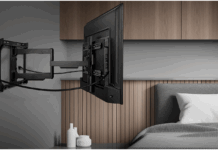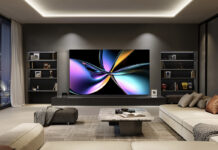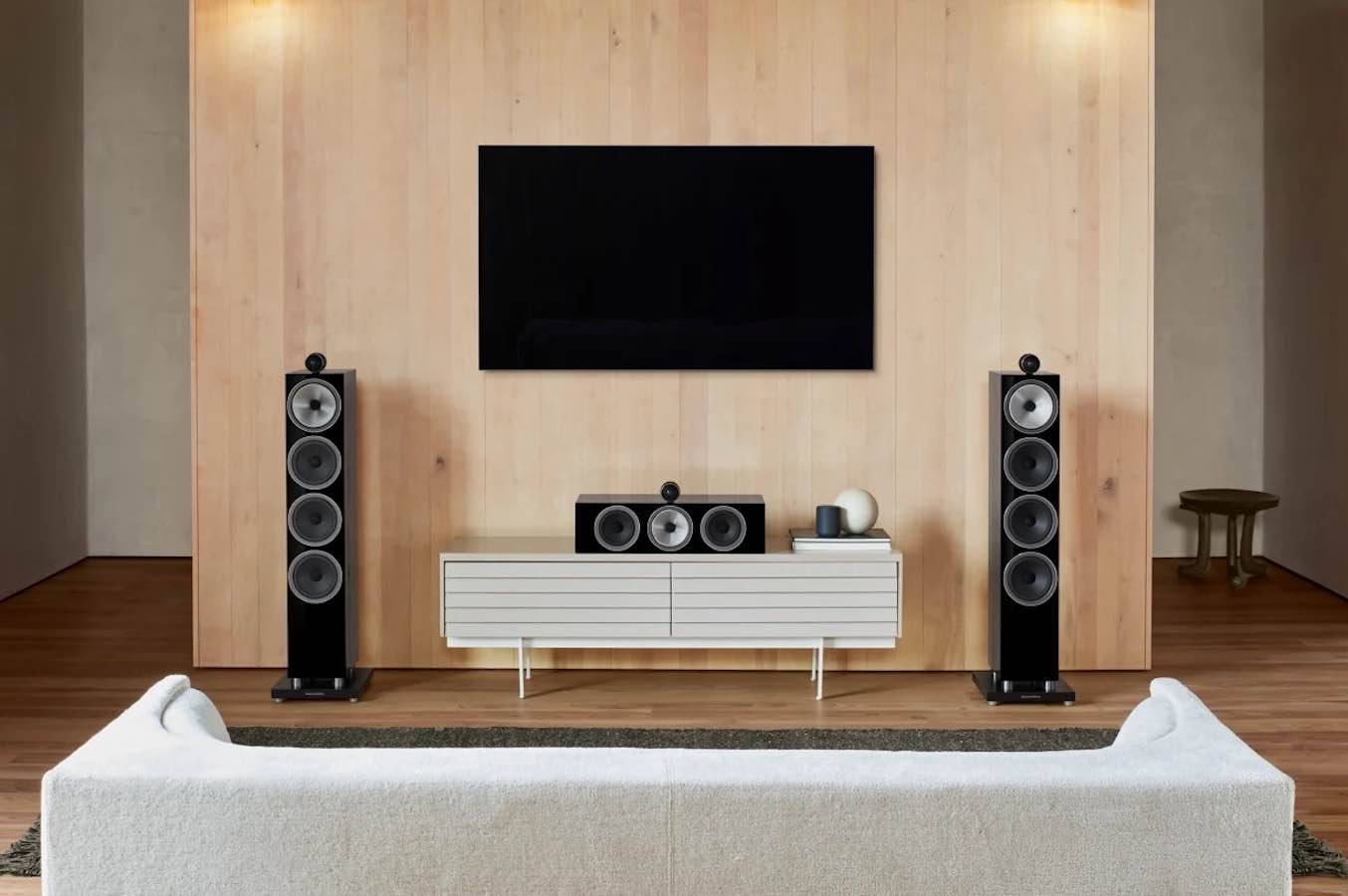
If you enjoy home audio and surround sound, you may be familiar with the subreddit for home theatre setups. I’ve scrolled through many times, and I always find a new image to inspire me in my quest for the perfect home theatre. They aren’t all high-end and expensive either – some are as simple as a receiver and 3 speakers. The takeaway from browsing photos of home theatres is that they show how anyone with any type of budget can set one up in their living room, basement, or even garage. From low-budget to high-end, here are a few ways you can amplify your TV audio and enjoy surround sound at home.
Simple home audio for the smaller budget
Setting up a home theatre system can be a little daunting if you only look at bigger systems with a lot of speakers, but if you want a simple, inexpensive way to get started on your journey to better sound, all you need is a sound bar.
You can take a look at the sound bar buying guide for more on sound bar features, but you’ll find they are great entry-level home audio devices for quite a few reasons. They can improve the quality of your TV’s audio dramatically, with a right, left, and center speaker to provide more precise dialogue. Sound bars are relatively inexpensive, and you can find affordable models for a few hundred dollars. They are also very space-saving in that they sit directly under your TV.
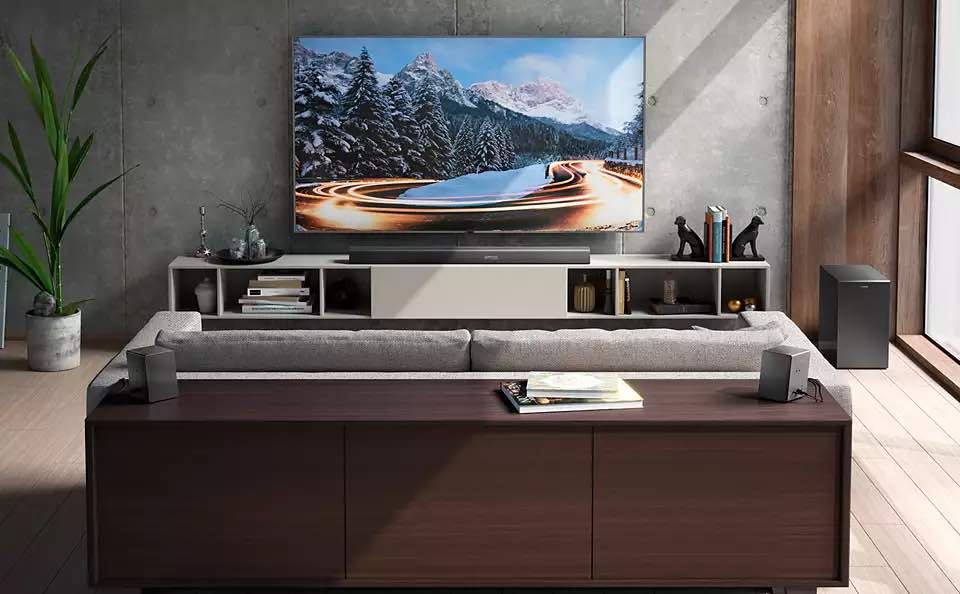
Sound bars are simple to set up and come in many different varieties. You can find 2 or 3-channel sound bars or upgrade to 7 or 9-channel sound bars that have extra speakers and a subwoofer. With a 7-channel surround sound sound bar, you can enjoy Dolby Atmos content where audio is projected above and around you. These sound bars also have built-in Wi-Fi so you can stream music or use voice controls to turn your volume up.
The only downside to a sound bar is that you usually can’t connect extra speakers as they have limited inputs. If you want to add speakers to your system you’ll have to choose wireless speakers that pair with your specific sound bar. You can take a look at this article on whether you should connect a sound bar to a receiver for more information on why speaker compatibility is important.
Mid-budget home theatre audio
If you’d like to set up a true surround sound system and you have mid-range budget, you can choose a receiver and a set of speakers. Entry-level receivers are low in cost but still have a lot of great features. Some models have Wi-Fi and Bluetooth built in so you can stream music. They have HDMI ports to connect your gaming consoles or cable boxes, and they have enough power to improve your TV audio dramatically. You’ll find more information on receivers in the receiver buying guide.
If you are only choosing a few speakers to pair with your receiver, your best options are a set of bookshelf speakers, a center speaker, and a subwoofer. Bookshelf speakers are available in wired or wireless types, they are compact and sit neatly beside your TV or on a shelf nearby, and they offer amazing sound quality for movies, TV shows, and music. Adding a center speaker ensures you have a speaker dedicated to handling dialogue, so you’ll never have to strain to hear what someone is saying when watching movies.
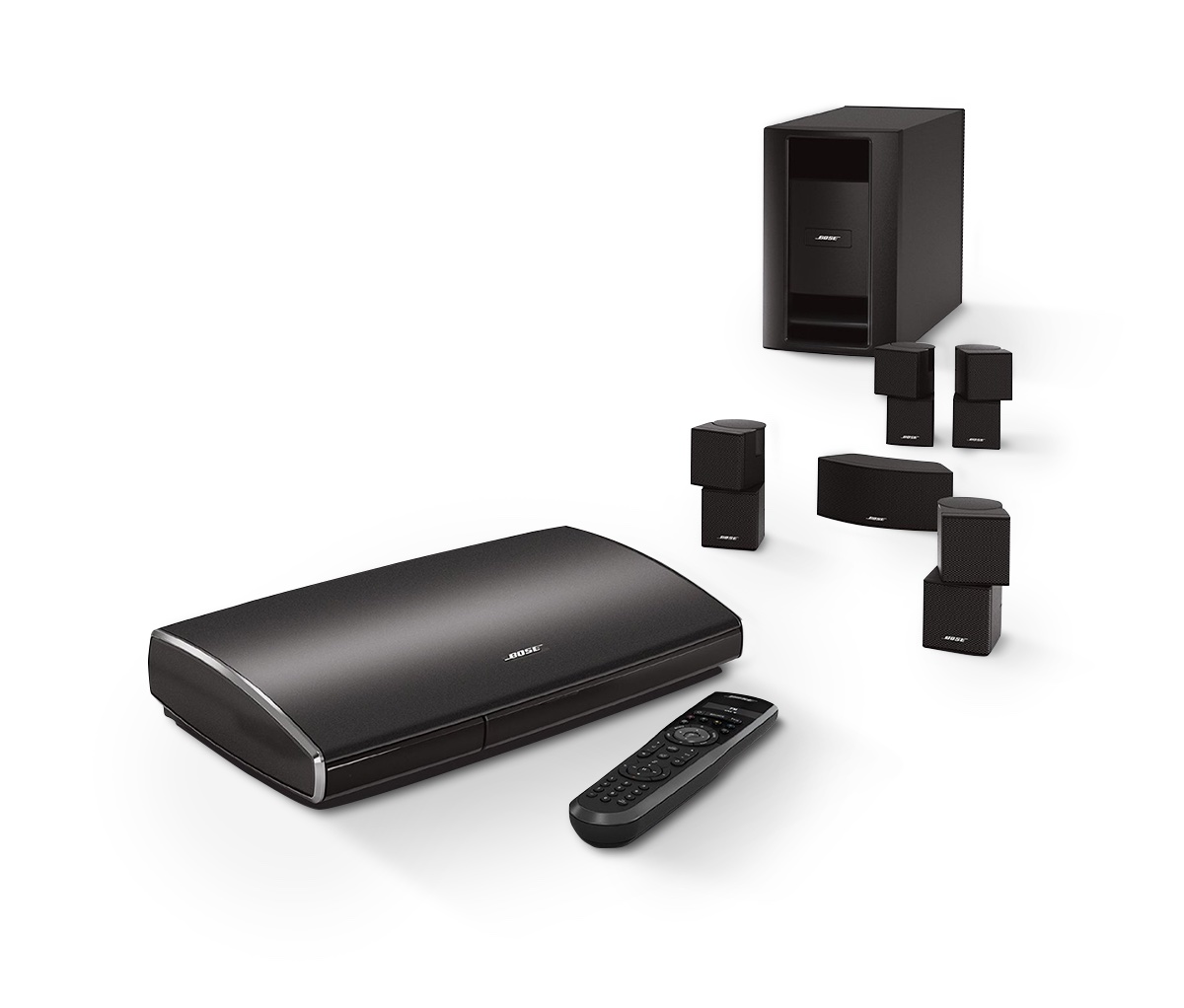
One of the best ways to choose a mid-range setup is to opt for a home theatre system or home audio bundle. These systems include a receiver, two or three speakers, and a subwoofer. They are easy to set up and they are all compatible with each other so you don’t have to worry that your speakers won’t easily connect to your receiver. You can also find an entry-level home theatre system for a fairly low price.
Home theatre systems are an upgrade over a sound bar because the speakers can be placed around the room to create an immersive surround sound experience. If your budget is more flexible, you can choose a more expensive system with height speakers you can add to your walls or ceiling for Dolby Atmos surround sound.
High-budget home theatre
If budget is not a concern and you’d like the best of the best, the sky is the limit. You can choose your receiver and speakers individually and add two subwoofers for deep bass. There are 9-channel Dolby Atmos systems with a receiver, tower speakers, bookshelf speakers, a center channel, several ceiling speakers, and one or two subwoofers. Some types of high-end surround sound systems are THX certified for a home audio experience that’s on par with what you’d enjoy in a movie theatre.
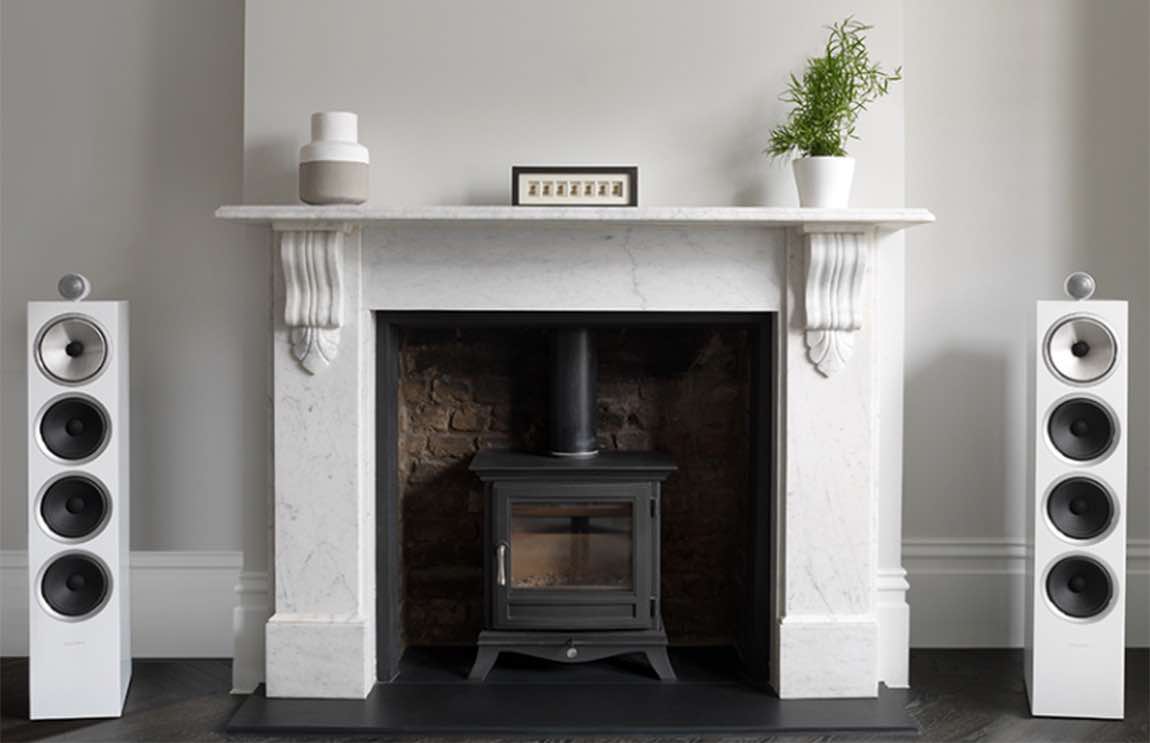
If budget is not a concern you should look for speakers from brands like Klipsch, Sennheiser, Bowers and Wilkins, and Sonos. They offer a high-end sound that will satisfy any audiophile, and their speakers are designed to stand out. With black and gold or white designs, these speakers are eye candy for anyone who loves home theatre. Take a look at the speaker buying guide for more of the features you’ll find on high-end speakers.
One thing to keep in mind when choosing high-end receiver and speaker system is that they can be more difficult to set up than a sound bar or entry level sound system. If you choose each piece individually you’ll want to ensure they are all compatible before you bring them home. For the best sound quality possible, you may also want to have someone set up your home theatre system for you.
Which home theatre system will you choose?
To narrow down your options when choosing home theatre components, just browse photos of other people’s home theatre setups. I find it makes it easy to choose the system that works best for you and your budget. With such a wide range of price points in home theatre audio, you’ll see that everyone can enjoy a surround sound system. Once your new audio system is in place, you can look forward to an immersive listening experience for all of your favourite shows and music. You can start planning your own system by taking look at all of the speakers, receivers, sound bars, and home theatre bundles at Best Buy.

